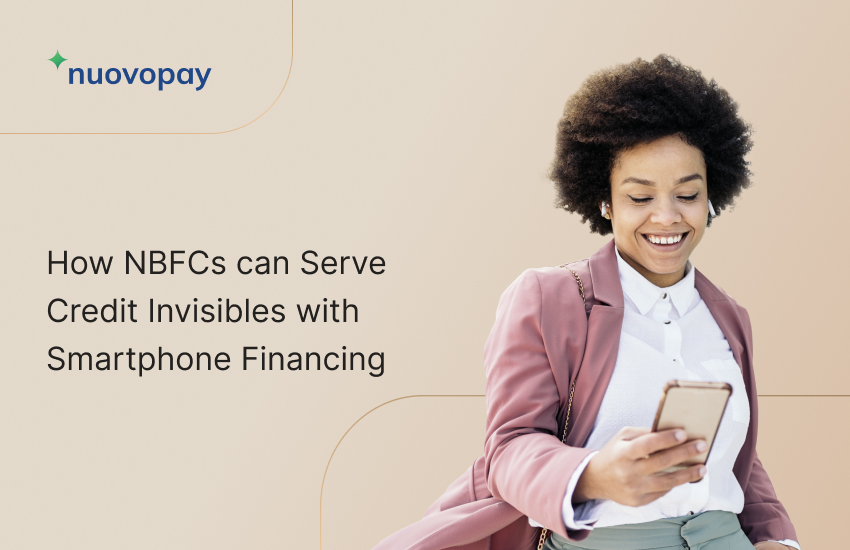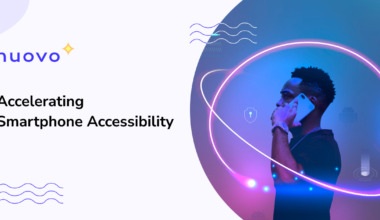About 100 million Americans lack a credit file or have insufficient information in their credit files, making it difficult to obtain traditional loans and credit cards.
These “credit invisibles” are young people just entering the workforce or consumers from lower-income neighborhoods. Such consumers have a lot of credit activity that is not reported to the credit bureaus, and therefore, is not included in the credit score. Another reason some consumers are invisible is that they are new to borrowing and haven’t established a credit history. As a result, they find themselves in a catch-22 situation.

Credit invisibles have the borrowing capacity but don’t have a formal track record of repaying debts. They make payments such as rent, utilities, and debts from small businesses that can’t be reported to credit bureaus. The credit invisible may actually have an excellent debt repayment history—it just hasn’t been reported.
Non-banking financing institutions (NBFCs) are agile in providing loan and credit facilities and can help credit invisibles build a credit score by reporting smartphone financing payment histories to credit bureaus. Helping credit invisibles get small smartphone loans and making sure they repay on time can establish a good credit score.
Smartphone financing to help build credit
The cost of a smartphone is higher than it was in the past. In 2022, the average price of a smartphone in the consumer segment in the United States stood at around USD 550. As smartphones become more expensive, consumers may want to finance the purchase and pay over time.
Several smartphone manufacturers and wireless carriers offer installment plans for smartphone purchases. But these options may not always help credit invisibles build a credit file since they don’t usually report activity to the major credit reporting bureaus.
NBFCs have a unique opportunity to support credit invisible borrowers in getting smartphone loans at a reasonable rate and term. Consumers could qualify to build a credit file, thus helping them generate a credit score and become more “visible.”
Due to the absence of a credit score, NBFCs can ask consumers for a small down payment and operational fees before financing the rest of the purchase. Consumers can then pay the smartphone loan in monthly installments.
Making smartphone loan payments on time may be the quickest and easiest way to build a credit score. After the smartphone loan has been paid off, NBFCs can report the payments to credit bureaus. They can utilize this information to include credit invisibles in the credit rating system.
Protecting smartphone financing against bad debt
Making smartphone loans to credit invisibles comes with risks. Loan default is one of the biggest credit risks that NBFCs have to face. The lack of a credit profile makes it difficult to know the long-term credit repayment habits of a borrower or predict whether she or he will default.
There is a risk that delinquency and loan-loss levels could increase if consumers don’t pay as per the smartphone financing terms. To tackle payment defaults, appropriate control mechanisms are essential to delivering a realistic credit-invisible smartphone financing program.
With device-locking technology, NBFCs can protect their smartphone loans against default. The technology reduces bad debts by encouraging consumers to make their monthly payments on time. Whenever a payment is delayed, NBFCs can use the device locking technology to perform a series of steps until the payments resume.
The steps include sending regular reminders before the payment due date, followed by overdue payment messages. Upon missed payments, the consumer’s smartphone is remotely locked. However, essential features such as phone calls and stored data remain untouched.
The technology also allows NBFCs to incorporate their smartphone financing programs with mobile money to encourage customer repayment habits and share information about creditworthiness with credit bureaus. Besides reducing delinquency rates, device-locking technology also minimizes collection costs.
Wrapping up
Being credit invisible does not mean they are not creditworthy. The coalescence of issues such as access to credit, device affordability, and financial inclusion has created a watershed moment unlike any other. NBFCs have an opportunity to strategically tap into the underserved market to generate profit, not only to support the business but also to address the credit visibility needs of people. All without taking on undue risks because of device-locking technology.





